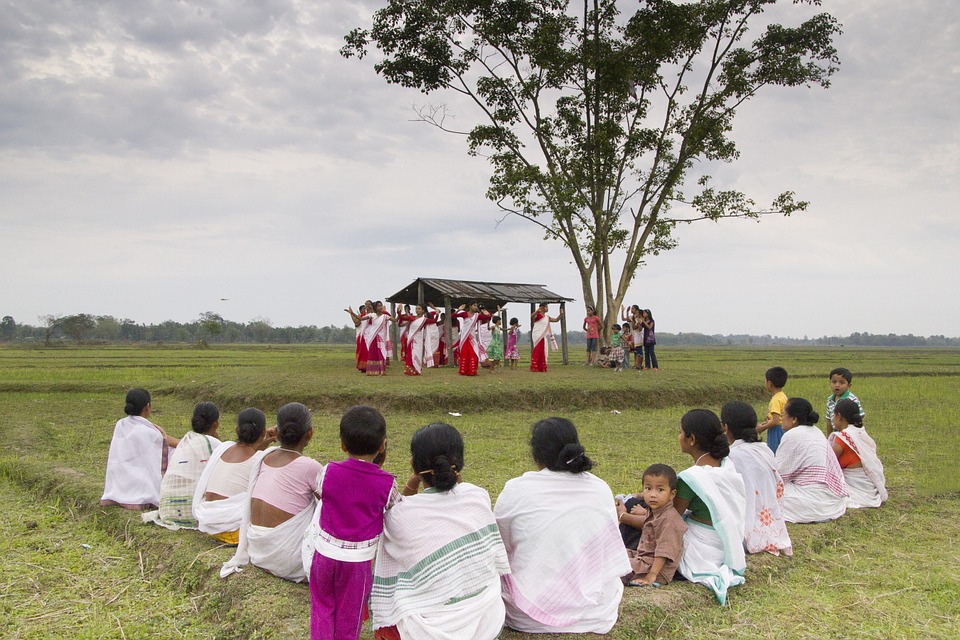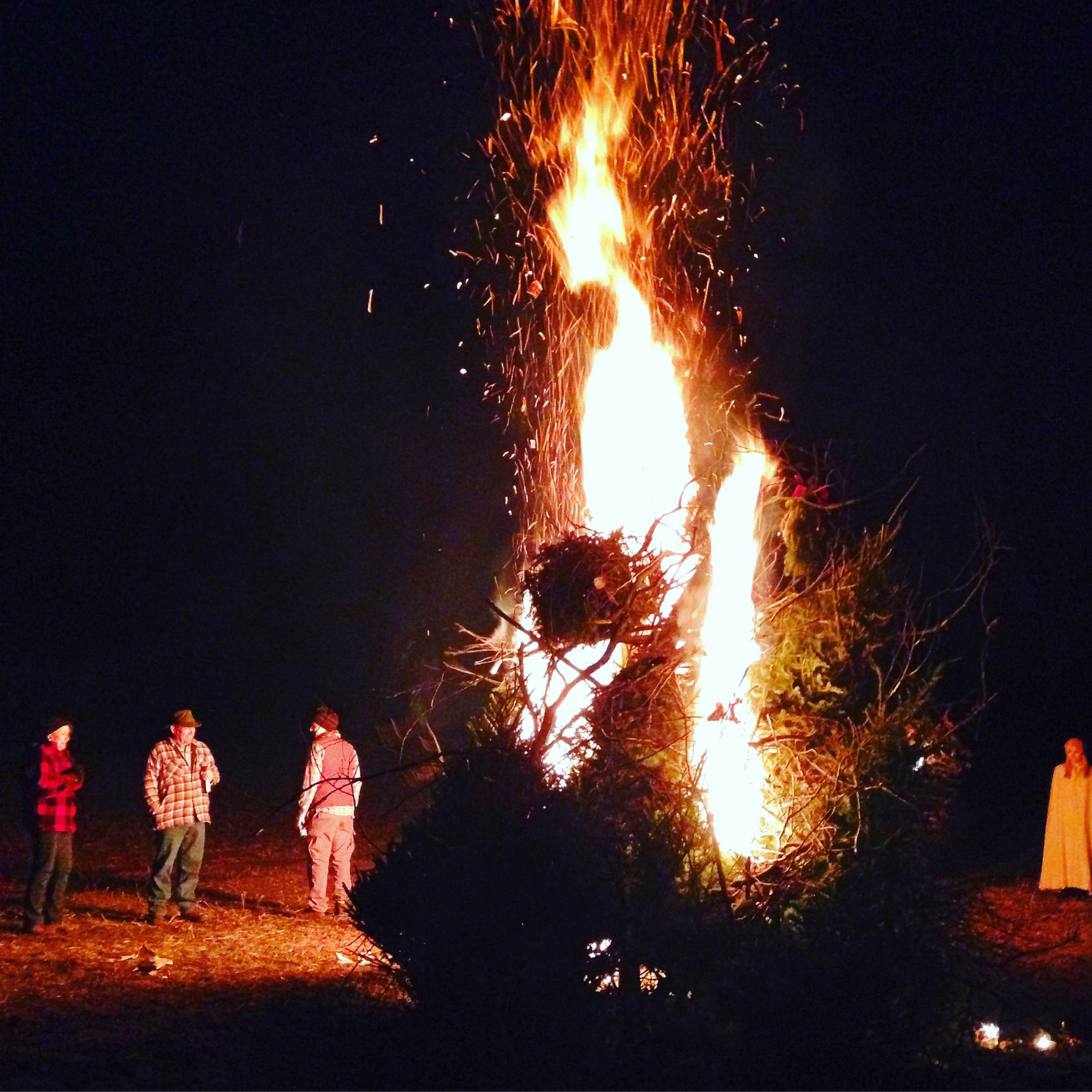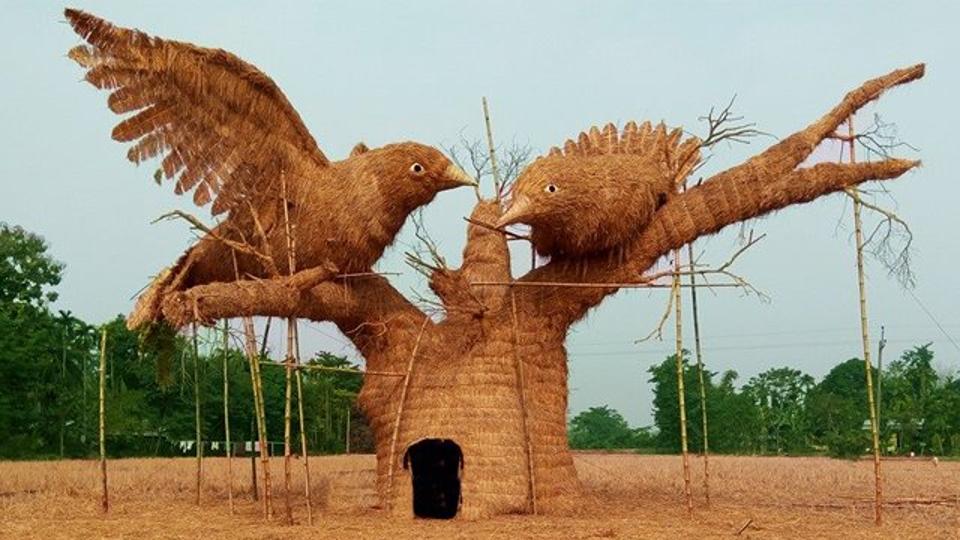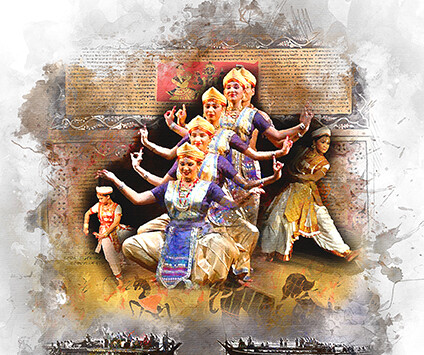The traditional Bhelaghars of Assam
Whether it’s an elaborate celebration or a respectful honouring of traditions – for the Assamese, their calendar is loaded with reasons to celebrate. One such festival to welcome the end of harvest season is Magh Bihu, which witness people in Assam evoke social messages hidden in their traditional practices.
With the arrival of Maagh, a month in the Indian calendar (months of January–February according to the Gregorian calendar) people in Assam (northeast India) begin to prepare for the festivities of praying to their fire god. The festival of Magh Bihu or Bhogali Bihu, marks the end of winters and the harvesting season, and is a traditional welcome to longer days.
It is not by chance that Magh today is one of the most auspicious and prime festivals of Assam. Concurrent to a special time in the farming calendar, the granaries during these months are full and hence the celebrations have been an important part of ancient Assam, which is still practised in the same manner.
“To understand typical Assamese culture and their folklore, it is best to travel here during the festivals. It is interesting to witness how on the evening before celebrations, people build traditional huts with the hay from harvest fields and have a get together inside it before burning it the next morning,” says Kushagra Sirohi, engineer and avid traveller from New Delhi.
These huts, which are colloquially called ‘bhelaghars’ or ‘mejis’ are structured preferably near river beds by people from all communities in Assam, who then prepare local delicacies from fish and meat for a feast.
Singing and dancing to the beats of folk tunes form an intrinsic part of the celebrations, and the traditional songs mention fire god asking for heat and thanking him for his return. Locals spend the night performing folk dances and singing songs inside Bhelaghars before burning it the next morning, for it is believed that this bonfire signifies the end of the cold season.
Around the fire, the Assamese chant prayers appealing to their fire god (Agni) to not cause destruction during the coming dry months, and thank him to mark the end of the harvest season. People throw in delicacies made with rice and betel nuts into the flames, and sing and dance till the fire dies out.
After the prayers, the locals continue to celebrate for a week with traditional games of ‘tekeli bhonga’ (pot-breaking) and buffalo fighting.
Bhelaghars give out silent social messages
In lieu of typical conical makeshift huts, this year the natives played with different themes for bhelaghars – with people in Lakhimpur district, worst affected by the recurring annual floods, highlighting their sufferings during the monsoon with the help of flood-themed bhelaghars.
Shifting the spotlight to deteriorating natural resources, in the hill district of Karbi Anglong, ‘Save Brahmaputra from pollution’ was adopted as the theme, while locals at Demow in Sivasagar and Nagaon’s Amonisali chose ‘Save Kaziranga’ to create awareness. At Dhupdhora, the man-elephant conflict was depicted with a bhelaghar representing an elephant destroying a house.
Other themes explored across the state were igloos, sledges drawn by animals, scenes from Gulliver’s Travels, London’s Tower Bridge, Eiffel Tower, Big Ben clock tower, India Gate, Red Fort, and the 9/11 twin towers, amongst many others.
















